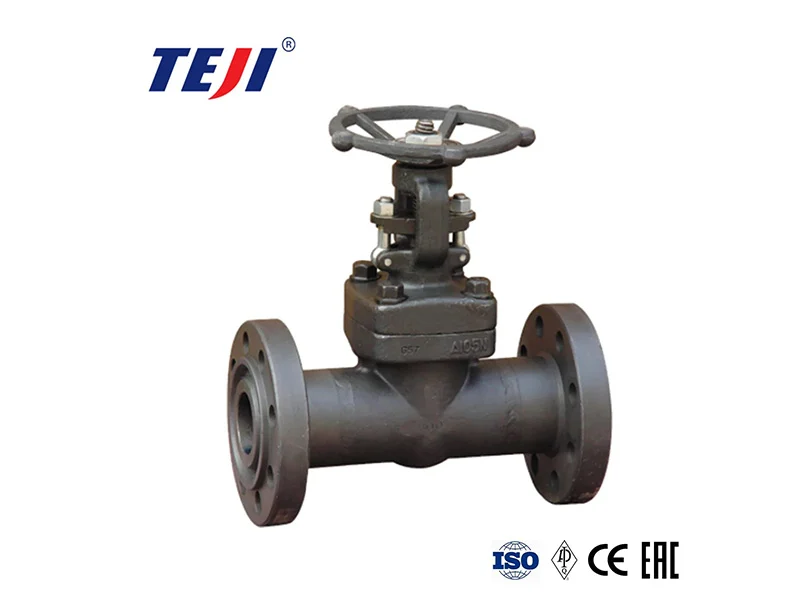Both floating and trunnion ball valves belong to the same category of ball valves and share the same operating principle: opening and closing by rotating the ball 90° around the centerline of the valve body. They enable rapid shutoff, distribution, and flow direction changes. They are easy to operate, offer rapid opening and closing times, and facilitate remote control. They play a vital role in industrial piping systems.
However, despite being both ball valves, floating and trunnion ball valves differ. These key differences lie in their structure, sealing mechanism, applicable operating conditions, and maintenance requirements.
Structural Differences
Floating ball valve: The ball is supported only by the valve seats on either side, with no fixed axis. The valve stem is connected only to the upper end. Under the influence of media pressure, the ball can move slightly, pressing against the outlet valve seat to achieve a seal. This results in a simple structure, compact size, and light weight.
Trunnion ball valve: The ball is fixed to the valve body by upper and lower valve stems, forming a stable center of rotation. The ball itself does not move. The valve seat is usually floating and equipped with a preloaded spring. Media pressure or spring force presses the valve seat against the ball to achieve a seal. This structure is relatively complex and has more parts.
Sealing Principle
Floating ball valves rely on medium pressure to push the ball to automatically adjust its position, pressing against the valve seat. Higher pressures provide a more reliable seal, but leakage may occur at lower pressures.
Trunnion ball valves achieve sealing through the elastic preload of the valve seat or a self-tightening mechanism due to medium pressure. This maintains a seal even without medium pressure, providing greater sealing stability.
Applicable Operating Conditions
Pressure and Diameter:
Floating ball valves are suitable for medium- and low-pressure applications (e.g., below ANSI 600lb) and small-diameter applications. At high pressures, the ball can overextend the valve seat, causing deformation or operational difficulties.
Trunnion ball valves can withstand high-pressure, large-diameter applications (e.g., petrochemical and long-distance natural gas pipelines) and offer greater flow capacity.
Temperature and Media:
Floating ball valves require high media cleanliness, as impurities can easily damage the sealing surface. They are commonly used with room-temperature clear water or less corrosive media.
Trunnion ball valves can handle high and low temperatures (e.g., 196°C LNG) and harsh media containing solid particles. Their wear-resistant seat design extends valve life.
Operation and Maintenance
Operating Torque: Floating ball valves have low friction and are easy to operate due to the floating ball structure. Trunnion ball valves, supported by bearings, offer more stable torque, but still require a larger actuator for high pressures.
Maintenance Difficulty: Floating ball valves have a simple structure and low maintenance costs, but valve seat replacement requires downtime and disassembly. Trunnion ball valves have a complex structure, require specialized tools and higher installation precision, and are therefore more expensive to maintain.
Economical: Floating ball valves have low manufacturing costs, and procurement costs for small-diameter (e.g., DN50 and below) can be approximately 30% lower than those for trunnion-mounted ball valves. Trunnion ball valves are more expensive due to their complex structure and material requirements, but their lifecycle costs are more advantageous in high-pressure applications.
The above analysis shows that floating ball valves are suitable for economical applications involving low to medium pressures, small diameters, and clean media (such as municipal water supply), while trunnion ball valves are suitable for demanding applications involving high pressures, large diameters, extreme temperatures, or impurities (such as petrochemicals and LNG).
Of course, if you’re still undecided about choosing between floating and trunnion ball valves, let’s analyze the advantages and disadvantages of floating and trunnion ball valves, respectively, hoping this will be helpful.
Advantages of Floating Ball Valves
Simple and Compact Structure: Floating ball valves primarily consist of a valve body, ball, seat, and stem, lacking complex support structures. Consequently, they are compact and lightweight, making installation and maintenance easier, space-saving, and cost-effective. Due to their simple structure, relatively few parts, and relatively easy manufacturing process, manufacturing and procurement costs are generally lower than fixed ball valves, offering a high cost-performance ratio.
Quick Opening and Closing: The floating nature of the ball on the seat enables faster and more flexible opening and closing, enabling rapid media shutoff, distribution, and flow direction changes, facilitating remote control.
Low Fluid Resistance: The ball can be opened and closed with a 90-degree rotation in the pipeline, creating minimal fluid resistance. This allows for smoother flow through the valve, reducing energy loss and lowering pipeline system operating costs.
Easy Operation: The operating lever has a narrow turning angle and a light feel, saving manpower and facilitating operation. A variety of actuation methods are available, including manual, pneumatic, electric, and hydraulic, allowing for flexible selection based on specific needs. Good protection of the sealing surface: The sealing surface and the spherical surface are often in a closed state and are not easily eroded by the medium, which is beneficial to extend the service life of the sealing surface and ensure the long-term stable sealing performance of the valve.
Disadvantages of Floating Ball Valves
Limited Applicable Pressure Range: Generally suitable for low- to medium-pressure applications. Under high-pressure conditions, the ball’s sealing force on the valve seat can be excessive, potentially causing deformation and wear of the valve seat, affecting the valve’s sealing performance and service life. It can even cause the ball to press into the valve seat, preventing normal opening.
High Operating Torque: Especially during closing, since the sealing force between the ball and the valve seat relies entirely on the media pressure, high media pressures or large valve diameters require a high operating torque to open and close the valve. This may require a larger actuator to actuate the valve, increasing equipment cost and energy consumption.
Susceptible to Wear: The high friction between the ball and the valve seat can easily cause wear on the sealing surface over extended use, leading to leakage and affecting the valve’s proper operation and sealing performance. Regular inspection and maintenance, including replacement of worn components, are necessary.
Unsuitable for Complex Media: Suitable for relatively pure liquids and gases, floating ball valves are susceptible to erosion and wear of the sealing surface by high-viscosity, crystallizing, or solid particle-laden media, making them less suitable for use with high-viscosity, crystallizing, or solid particle-laden media. This can affect sealing performance and service life, making them less suitable.
Advantages of Trunnion Ball Valves
Wide Applicable Pressure Range: Typically suitable for high-pressure applications, their structural design allows the ball to better withstand the forces of high-pressure media during opening and closing, resulting in more reliable sealing performance. For example, in high-pressure piping systems in the petrochemical industry, where nominal pressures are PN 160 and above, trunnion ball valves are a common choice. Floating ball valves, on the other hand, are generally suitable for medium- and low-pressure applications.
Adaptability to Complex Media: Trunnion ball valves are more suitable for media with high viscosity, prone to crystallization, or containing solid particles. This is because the sealing structure between the ball and seat of a trunnion ball valve is relatively complex, better able to withstand the erosion and wear of these complex media on the sealing surface. For example, in chemical production, when conveying slurries containing particles or highly viscous materials, trunnion ball valves can better ensure sealing performance and service life. Floating ball valves are suitable for relatively pure liquids and gases.
Low Operating Torque: The ball is fixedly connected to the upper and lower valve stems. During operation, the force exerted by the fluid pressure in front of the valve on the ball is fully transmitted to the bearings, preventing the ball from moving toward the valve seat. Consequently, the valve seat is not subjected to excessive pressure, resulting in low torque for the trunnion ball valve. Floating ball valves experience higher operating torque under high pressure or large diameters.
Excellent Flow Control: When fully open, the flow path is unobstructed, with minimal pressure loss, enabling high flow control. In applications requiring precise flow control, such as material proportioning in large chemical plants and hot water flow control in heating systems, trunnion ball valves provide more stable and accurate flow control.
Long Service Life: Minimal seat deformation reduces seal failure and component damage, thereby extending the valve’s service life and making it more suitable for long-term, stable operation.
Disadvantages of trunnion ball valves
Complex structure and high cost: The ball is fixedly connected by upper and lower valve stems and requires corresponding components such as bearings. This relatively complex structure leads to higher manufacturing and procurement costs than floating ball valves. Furthermore, the manufacturing process and installation precision requirements are high, increasing the overall cost.
Relatively slow opening and closing speed: The complex structure requires greater resistance and more complex movements during the opening and closing process. Compared to floating ball valves, their opening and closing speeds may be slower, making them less suitable for applications requiring rapid opening and closing.
However, whether you want to buy a floating ball valve or a trunnion ball valve, TEJI will provide you with high-quality valves with professional after-sales service to ensure your usage experience.




